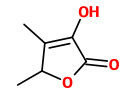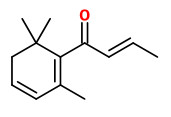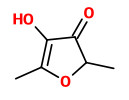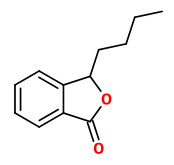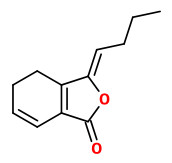Levisticum officinale Koch. - syn. Levisticum levisticum Karsten, Levisticum officinale Pilger., Angelica levisticum All. - Apiaceae
lovage, Liebstöckel, Maggikraut
„The exact native range is disputed; some sources cite it as native to much of Europe and southwestern Asia, others from only the eastern Mediterranean region in southeastern Europe and southwestern Asia, and yet others only to southwestern Asia in Iran and Afghanistan, citing European populations as naturalised. It has been long cultivated in Europe, the leaves being used as a herb, the roots as a vegetable, and the seeds as a spice, especially in southern European cuisine.“ wikipedia(EN)
„The german term 'Maggikraut' is due to the similarity of taste of Maggi seasoning with lovage, however, Maggi seasoning contains no lovage.“ wikipedia(DE)
Levisticum officinale radix, Levistici radix, lovage root is the dried cutted root of L.officinalis. It is used for digestive complains such as belching and bloating… Lovage root oil (0.4-1.7%) is collected by steam distillation with the aid of dimethicone (antifoams) and xylene (oil density > 1). [Kommentar zum DAB 10, 1994]
„The acidic fraction of a commercial lovage extract (Levisticum officinale Koch.) revealed the characteristic seasoning-like principle of the herb… Aroma extract dilution analysis resulted in six odorants having high sensory relevance. They were identified as 3-hydroxy-4,5-dimethyl-2(5H)-furanone (sotolon), (E)-β-damascenone, 2-ethyl-4-hydroxy-5-methyl-3-(2H)-furanone, 4-hydroxy-2,5-dimethyl-3(2H)-furanone, 3-methylbutanoic acid, and acetic acid. These odorants have not yet been reported in the literature as components of lovage. Sotolon was the key aroma compound of the acidic fraction of lovage extract due to its characteristic seasoning-like flavour and high flavour dilution factor. The concentration of sotolon was determined by a stable isotope dilution assay.“
[Blank, I.; Schieberle, P. Analysis of the seasoning-like flavour substances of a commercial lovage extract (Levisticum officinale Koch.). Flav. Frag. J. 1993, 8, 191-195] PDF
„The essential oil of dried root of Levisticum officinale large scale cultivated in Iran was obtained by hydrodistillation. The oil content was 0.6% (w/w) based on dry weight. The oil was analyzed by capillary GC and GC/MS. Twenty-four components were identified. 3-n-butyl phthalide constituted 85.2% of the oil. Other major components were 6-butyl-1,4-cycloheptadien (2.9%), butylidene dihydro phthalide (2.67%), butylidene dihydrophthalide (2.67%) and butylidene phthalide (1.48%).“
[Essential Oil Content and Composition of Levisticum officinale Large Scale Cultivated in Iran. Dayeni, M., Omidbaigi, R., Bastan, M. R., Journal of Essential Oil Bearing Plants, Vol.9(2), 2006, 152-155]
„Variations in the essential oil composition of Levisticum officinale W.D.J. Koch from different European countries were determined using capillary GC and GC/MS methods. The oils were obtained in yields of 0.11-1.80% from dried cut roots and 0.09% from leaves. A total of 48 components were identified, representing over 87% of the total yield of oil. Ten compounds not earlier reported: trans-p-mentha-2,8-dien-1-ol, iso-thujyl alcohol, p-mentha-1,5-dien-8-ol, bicyclo[3.2.0]heptan-3-ol, 2-methylene-6,6-dimethyl, trans-carveol, perillaldehyde, sabinyl acetate, perillyl alcohol, methyl ester of methylpentadecate acid, and methyl hexadecadienate acid. The principal components in the oils of L. officinale roots were β-phellandrene (0.1-48.9%), pentylcyclohexadiene (0-12.3%), trans-sabinyl acetate (0-12.1%), α-terpinyl acetate (0-26.1%), (Z)-3-butylidene phthalide (0.1-31.2%), and (Z)-ligustilide (0.2-70.9%). Phthalide isomers were predominant (73.2-82.6%) in the oils from Estonia, France, and Belgium. The roots oil of L. officinale from Scotland was rich in β-phellandrene (48.9%) and phenylacetaldehyde (17.2%). Maximum content of trans-sabinyl and α-terpinyl acetates (total 38.2%) was found in the oil from Holland. Estonian L. officinale root oil contained in high quantities (E)-ligustilide (52.4-70.9%) and pentylcyclohexadiene (12.3%). The L. officinale leaf oil cultivated in Estonia contained in high amounts α-terpinyl acetate (55.8%) and β-phellandrene (11.3%). The content of (Z)-ligustilide (17.0%) in the leaf oil was smaller compared with the root oil.“
[Composition of the essential oil of Levisticum officinale WDJ Koch from some European countries. Raal, A., Arak, E., Orav, A., Kailas, T., Müürisepp, M., Journal of Essential Oil Research, Vol.20(4), 2008, 318-322]
„The traditional use of L.officinale in different diseases has been thoroughly documented in several handbooks and in folk tradition. Its use is mentioned inthe ancient times by Dioscorides as Greek: ligusticon, Latin: ligusticum, the plant grown in Alpine region of Italy in Liguria (Dioskurides)…
Lovage preparations were used during the Middle Ages mainly as a emmenagogue, carminativum, diureticum and remedy for various skin ailments… For centuries it is known as carminative and spasmolytic folk
medicine…
In Germany, it was approved in inflammatory conditions of urinary tract and in kidney stones (Schimpfky 1900; Hogg 2001). In France lovage was used as digestive and carminative (Goetz 2007) and as a confectionary ingredient…
The results of supercritical CO2 extraction in constant pressure revealed the presence: cis-ligustilide (52.0%), trans-ligustilide (3.95%), 3n-butylidene phtalide E (1.75%), 3n-butylidene phtalide Z (0.73%), β-phellandrene (0.28%), α-terpinyl acetate (0.08%) (Daukšaset al.2002). Moreover palmitic acid (2.81%), phytol (2.62%), linoleic acid (3.52%), stigmasterol1 (11%), and β-sitosterol (1.28%) were found (Daukšaset al. 2002). Fehr (1980) identified the following substances in lovage root essential oil: α-pinene (4.5-4.6%), camphene (1.0-1.1%), β-pinene (7.1-8.0%), myrcene (0.9%), α-phellandrene 0.4-0.5%), α-terpinene (0.1%), limonene (0.8-1,2%), β-phellandrene (8.7-10.7%), cis-ocimene (0.2-0.4%), γ-terpinene/trans-ocimene (0.2-0.3%), terpinolene (1.2-1.5%), pentylcyclohexadiene (7.4-12.7%), pentylbenzene (0.1-0.3%), 3n-butytlidenephtalide (31.5-32.0%) and 3n-butylidene-4,5-dihydrophtalide (23.5-24.9%)… Phtalides are flavour compounds giving characteristic flavour in some species of Apiaceae, also in Levisticum officinale root…
Levisticum officinale extract has been recognised as GRAS (Botanicals Generally Recognized As Safe) for use as a flavour ingredient… The published data on pharmacological activities support the traditional use of preparations containing lovage root in the proposed indications. However, despite daily intake of lovage root as common vegetable, the therapeutic importance of the plant can be overestimated. Levisticum officinale
root oil is relatively nontoxic following acute exposure both by oral or topical administration… Lovage root use is not recommended during pregnancy and lactation. Moreover, some concern is needed with UV radiation exposure due to furanocoumarins photoactivation.“
[Assessment report on Levisticum officinale Koch, radix EMA/HMPC/524623/2011] PDF

Kohl, F.G., Die officinellen Pflanzen der Pharmacopoea Germanica, t.82 (1891-1895) plantgenera.org

Levisticum officinale, Schloß Holte-Stukenbrock, Germany (2025) © Stefan CC BY-SA 4.0 inaturalist.org

